Introduction: The Silent Question Every Trader Faces
You’re sitting in front of your trading app. A hot stock is running, your analysis is strong, and you’re sure of the profit potential. But there’s one problem—your available cash isn’t enough.
At this exact moment, every trader faces a crossroad:
Should you stick to normal trading, using only your own money?
Or should you go for MTF (Margin Trading Facility), where brokers lend you funds to take bigger positions?
Table of Contents
This choice could make or break your profits. Pick wrong, and you risk heavy losses. Pick right, and you might multiply gains even when capital is limited.
That’s why understanding the key differences between MTF vs Normal Trading isn’t just useful—it’s essential for survival in modern markets.
What is MTF (Margin Trading Facility)?
Margin Trading Facility (MTF) allows traders to buy stocks even when they don’t have full funds. The broker lends money against a margin (cash or shares), enabling bigger trades.
- Regulated by: SEBI & stock exchanges (NSE/BSE)
- Funding Ratio: Usually 4x to 5x leverage (varies by broker)
- Collateral: Cash, shares, or liquid mutual funds
- Interest Rate: Brokers charge ~8–18% annually on borrowed funds
Example:
If you have ₹1 lakh and the broker offers 4x leverage, you can buy stocks worth ₹4 lakh.
But remember: profits and losses both get magnified.
What is Normal Trading?
Normal trading means buying and selling securities with your own available cash only.
- No borrowing, no leverage
- No interest charges
- Lower risk compared to MTF
Example:
If you have ₹1 lakh in your account, you can only buy stocks worth ₹1 lakh—no extra exposure.
It’s simple, safe, and widely preferred by long-term investors.
MTF vs Normal Trading: 5 Key Differences You Should Understand
Now, let’s dive into the five most important differences that every trader must know.
Capital & Leverage
- Normal Trading: Limited to your own capital.
- MTF: Brokers provide extra funds (up to 4–5x leverage).
Comparison Table – Capital Requirement
| Feature | Normal Trading | MTF Trading |
|---|---|---|
| Own Capital Needed | 100% | 20–25% (rest funded by broker) |
| Buying Power | Limited | 4–5x higher |
| Example (₹1 lakh) | Buy ₹1 lakh | Buy ₹4–5 lakh |
Emotional Hook:
Leverage is like a double-edged sword. It amplifies dreams but can also magnify nightmares.
Risk & Returns
- Normal Trading: Risk = only the capital you invest.
- MTF: Higher profits possible, but losses also multiply.

Case Study (Infosys Example, 2025):
- Infosys stock rises 10% in a week.
- Normal Trading (₹1 lakh): Profit = ₹10,000
- MTF (₹4 lakh exposure): Profit = ₹40,000 – Interest = Net ₹38,500
But if Infosys falls 10%:
- Normal Trading: Loss = ₹10,000
- MTF: Loss = ₹40,000 + Interest + Margin Call
Expert Quote (Bloomberg, 2025):
“Leverage doesn’t create risk, it magnifies it. Traders must balance greed with discipline.” – Ruchir Sharma, Market Analyst
Costs & Charges
- Normal Trading: Only brokerage + taxes.
- MTF: Brokerage + taxes + interest charges (8–18% annually).
Comparison Table – Cost Structure
| Cost Type | Normal Trading | MTF Trading |
|---|---|---|
| Brokerage | Yes | Yes |
| Taxes (STT, GST) | Yes | Yes |
| Interest Charges | No | Yes (daily basis) |
| Margin Pledge Fee | No | Yes (₹20–₹50 per pledge) |
Hidden Trap:
Many traders forget about daily interest compounding. What looks like a small cost can erode profits over weeks.
Holding Period
- Normal Trading: Hold stocks for years without restrictions.
- MTF: Holding depends on margin availability + broker’s risk checks.
Scenario:
If stock price falls, brokers may issue a margin call. If you don’t add funds, positions may be squared off automatically.
Emotional Insight:
Your dream of long-term wealth can end overnight in MTF if liquidity dries up.
Suitability & Investor Type
- Normal Trading: Best for long-term investors, beginners, and risk-averse traders.
- MTF: Suitable for experienced traders who:
- Understand technical analysis
- Can monitor markets daily
- Have high risk tolerance
Who Should Choose What?
| Trader Type | Best Option |
|---|---|
| Beginner Investor | Normal Trading |
| Long-Term Investor | Normal Trading |
| Short-Term High-Risk Trader | MTF |
| Swing Trader with Strong Risk Control | MTF |
| Retired / Conservative Investor | Normal Trading |
Real-Life Example: When MTF Went Wrong
In 2023, SEBI reported multiple cases where retail traders lost 70–80% of capital in a single market crash due to margin calls.
For example:
A trader with ₹2 lakh used MTF to build a ₹10 lakh position in small-cap stocks.
When the market corrected 12% in a week, his losses exceeded ₹1.2 lakh, and the broker squared off positions.
Had he used normal trading, his losses would have been limited to ₹24,000.
Lesson: Never use MTF without a strict stop-loss strategy.
Chart: Risk Amplification in MTF
(I’ll design a simple chart here comparing profit/loss % under normal vs MTF exposure across scenarios.)
Actionable Tips for Traders
- Use MTF only for short-term opportunities (swing trades, momentum plays).
- Don’t carry leveraged positions during volatile events (budgets, elections, Fed rate hikes).
- Always calculate breakeven after interest costs.
- Pledge only surplus shares, not your entire portfolio.
- Follow SEBI’s margin rules to avoid forced liquidations.

FAQs
Q1: Is MTF trading safe for beginners?
Answer: No. MTF is risky because losses can exceed your comfort level. Beginners should stick to normal trading.
Q2: What is the maximum leverage allowed in India?
Answer: As per SEBI rules (2025 update), brokers can provide up to 5x leverage in approved stocks.
Q3: Can I hold MTF positions for the long term?
Answer: Not advisable. Interest costs + margin calls make long-term holding risky.
Q4: Which is better—MTF or normal trading?
Answer: For safety and wealth-building, normal trading is better. MTF is only for skilled short-term traders.
Q5: Do brokers charge daily interest on MTF?
Answer: Yes. Interest is calculated daily on borrowed funds, reducing net profits.
Conclusion: Which One Should You Choose?
The battle of MTF vs Normal Trading comes down to risk appetite and trading style.
- If you value peace of mind, long-term wealth, and safety → Stick to Normal Trading.
- If you want higher short-term returns, understand risks, and have discipline → Use MTF selectively.
Final Thought:
Leverage is like fire. In the right hands, it cooks your food. In the wrong hands, it burns your house down.
Choose wisely. Trade safe. Build wealth steadily.




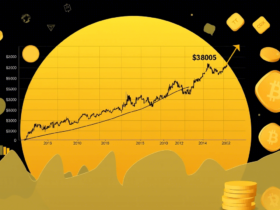
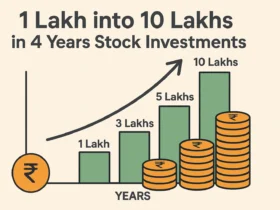













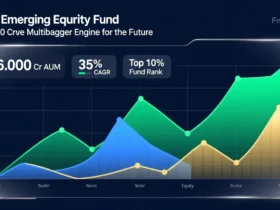
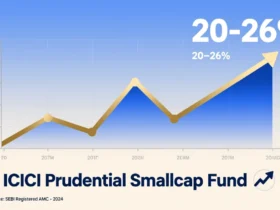




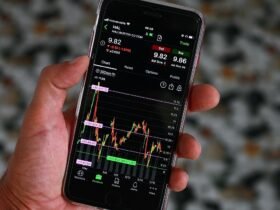






Leave a Reply